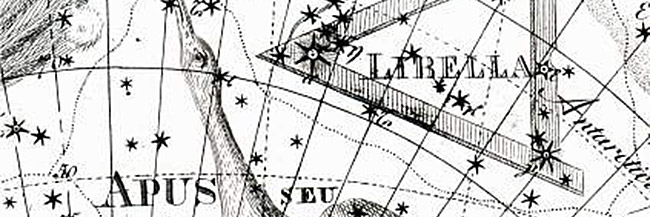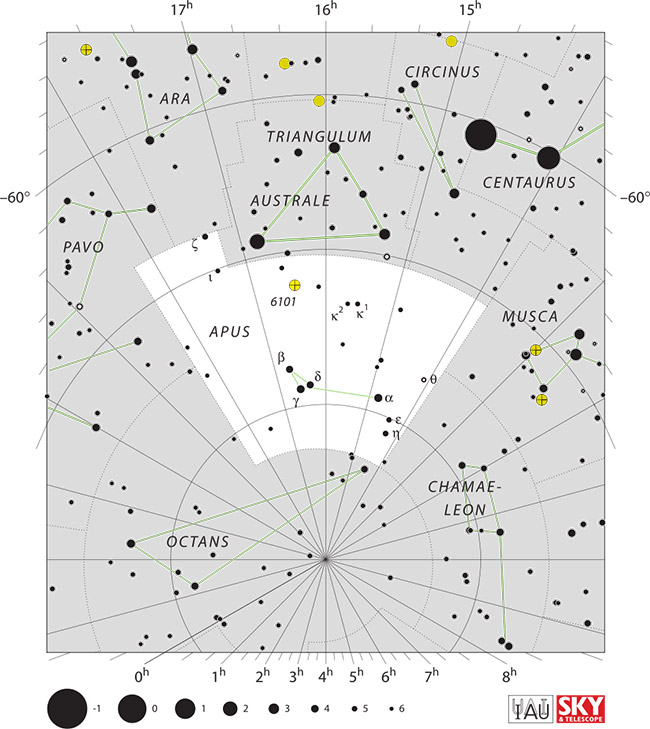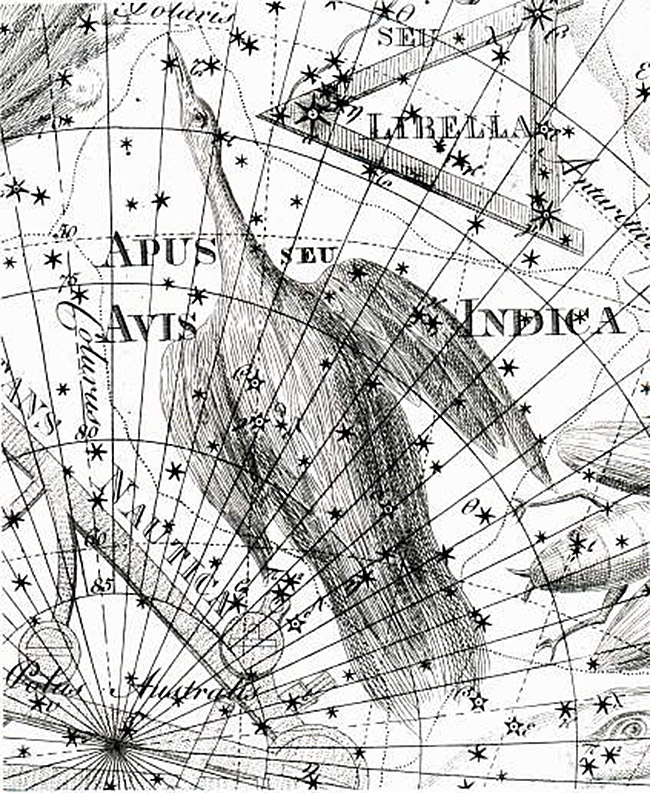Apus – Constellation Facts

Apus is another relatively small constellation covering only 206 square degrees in the third quadrant of the Southern hemisphere. It can be viewed at latitudes between +5° and -90°. Apus represents the bird of paradise and actually gets its name from the Greek word, apous which means ‘footless’ (these birds were once believed to have no feet).
Constellation Characteristics
Apus is 67th in size and is neighbors with the constellations of Ara, Chamaeleon, Circinus, Musca, Octans, Pavo, and Triangulum Australe. In addition, Apus has no Messiers, meteor showers or stars with known planets.

IAU and Sky & Telescope magazine (Roger Sinnott & Rick Fienberg), CC BY 3.0, via Wikimedia Commons
By IAU and Sky & Telescope magazine (Roger Sinnott & Rick Fienberg) CC BY 3.0, via Wikimedia CommonsPlanetary Systems
Although Apus is small it does have a few deep sky objects. Check them out:
- NGC 6101: known as a globular cluster this small wonder can be observed through a 4.5-inch telescope.
- IC 4499: appearing as a small patch through an 8-inch telescope, this globular cluster is closest to the south celestial pole.
- IC 4633 and NGC 6392: these two are the brightest galaxies that can be seen in the Apus constellation.
Main Stars
The constellation Apus contains only 4 significant stars, but it also has 4 lesser (yet notable) stars making up its configuration.
- Alpha Apodis is the brightest star in Apus (which will be discussed later in detail).
- Gamma Apodis is a yellow G-type giant star located about 160 light-years away. It is also the second brightest in this constellation.
- Delta Apodis is a binary star. The first and brightest component is an irregular variable star (Delta-1 Apodis) and is also a M-type red giant. The dimmer star (Delta-2 Apodis) is an orange K-type giant star.
- Kappa Apodis has two star systems. The first is Kappa-1 Apodis which is a blue-white B-type subgiant. It lies about about 1,020 light-years away. The second (Kappa-2 Apodis) is a binary star with a blue-white B-type giant and an orange K-type main sequence dwarf.
- Beta Apodis shines the third brightest in Apus and is considered an orange K-type giant star that is located 158 light-years away.
- Zeta Apodis is located 312 light-years from Earth and is also catalogued as a orange K-type giant.
- Eta Apodis is noteworthy as it is showing signs of absorbing some metals while being deficient in others. It is also emitting excess infrared radiation.
- Epsilon Apodis lies about 551 light-years away and is a blue-white B-type main sequence.

Apus seen in the Uranographia of Johann Bode (1801)
Apus seen in the Uranographia of Johann Bode (1801)Most Shining Star
Out of all the stars that make up the Apus constellation, none shine brighter than Alpha Apodis. It shines with a 3.825 magnitude and is considered a K-type giant. It is thought to be around 410 light-years away.
Mythology & History
Although Apus has no mythology surrounding it, it does have a some fascinating, yet confusing history. Its creator, Petrus Plancius, had originally named this constellation, Paradysvogel Apis Indica, (Paradysvogel means ‘the Bird of Paradise’ in Dutch and Apis Indica is Latin for “indian bee”). However, the constellation was misnamed. Apis should have been Avis (which means bird). Although some astronomers still used Apis Indica for this constellation, others like, Johannes Kepler called it Avis Indica. To avoid any further confusion, Avis Indica was renamed Apus. The constellation representing the bee (Apis) was renamed Musca to represent, instead, a fly.
Apus is a fascinating constellation, so the next time you are gazing into the night sky (in the Southern hemisphere) be sure to search out this intriguing figuration of stars.
